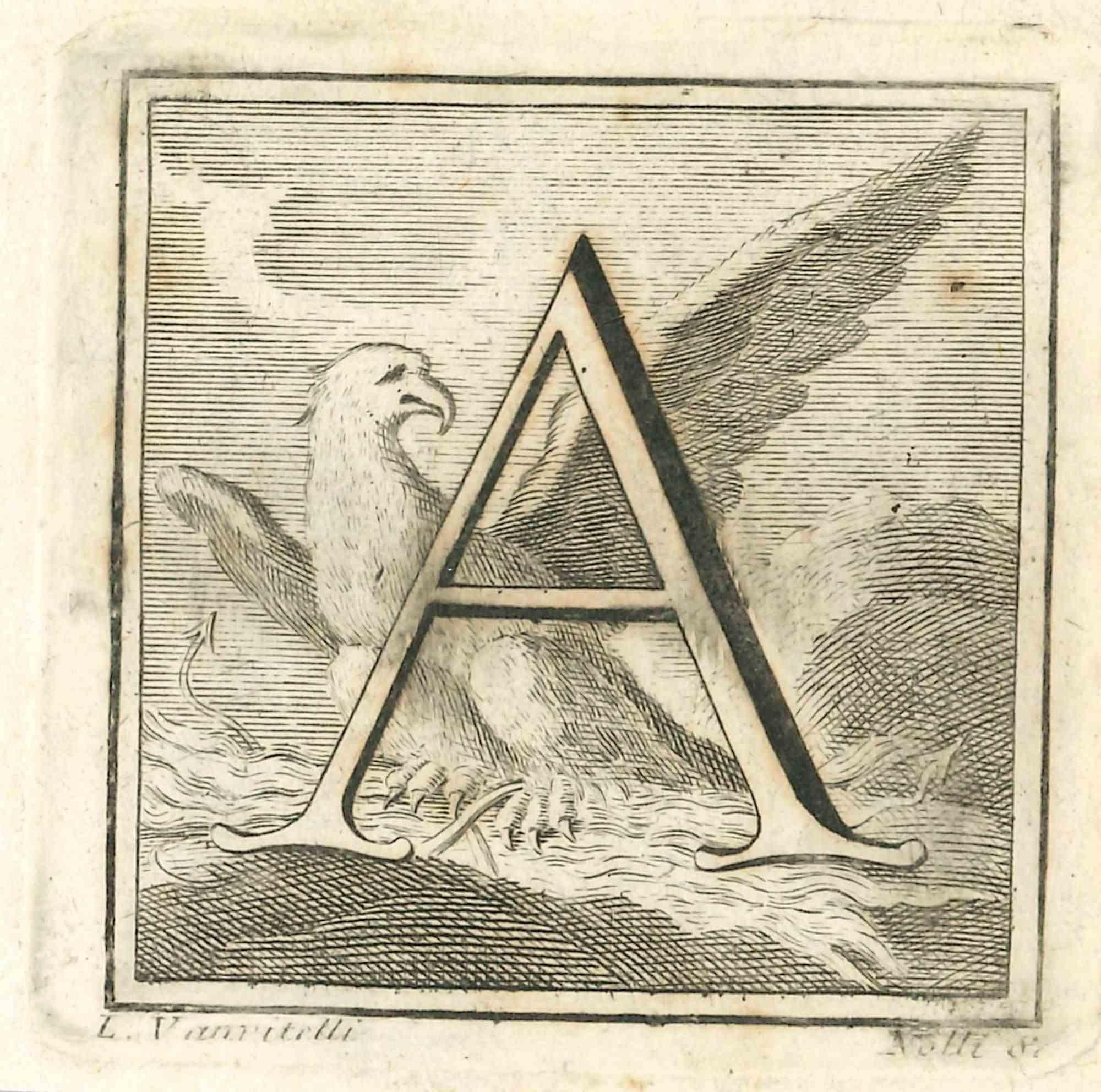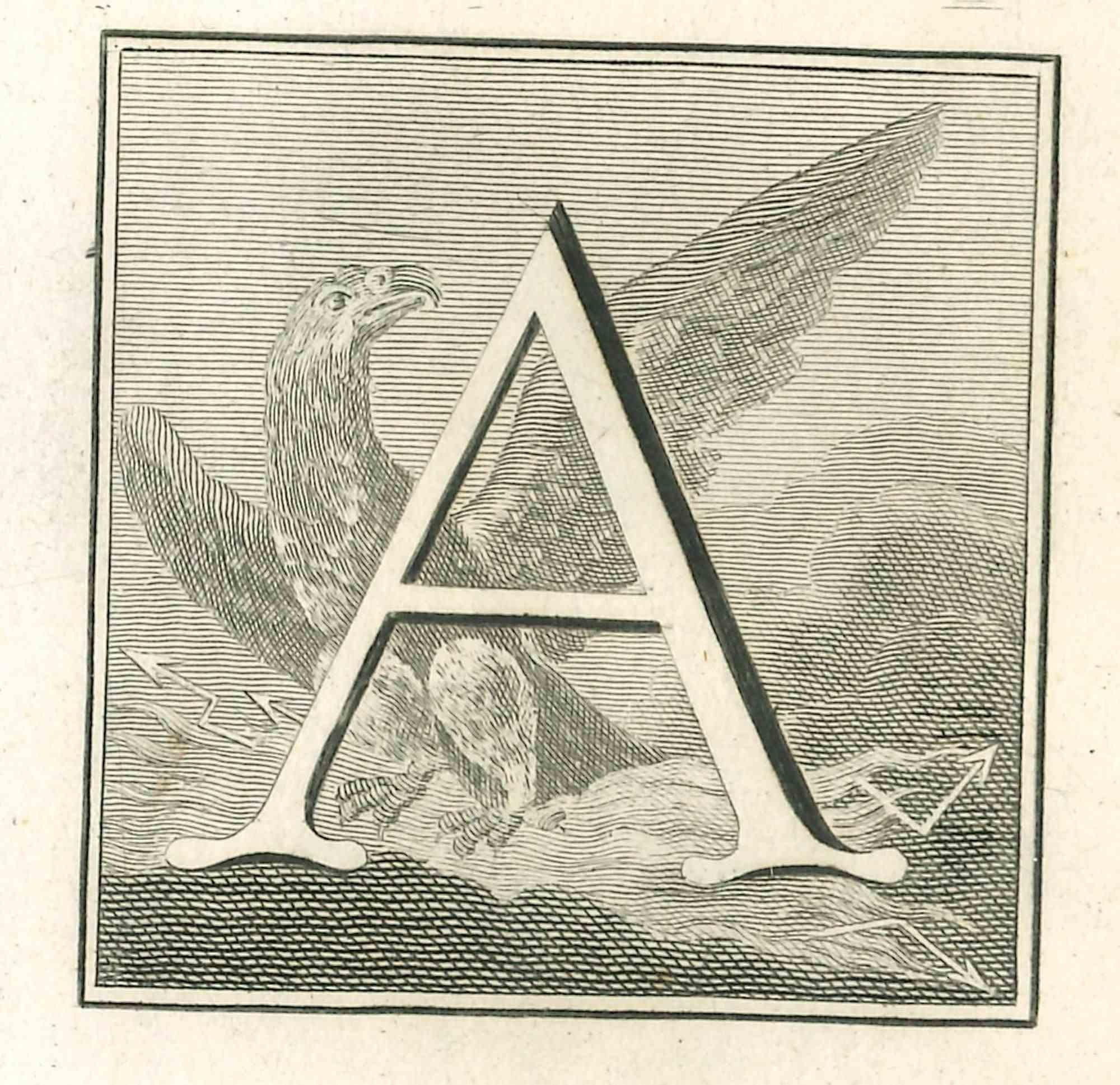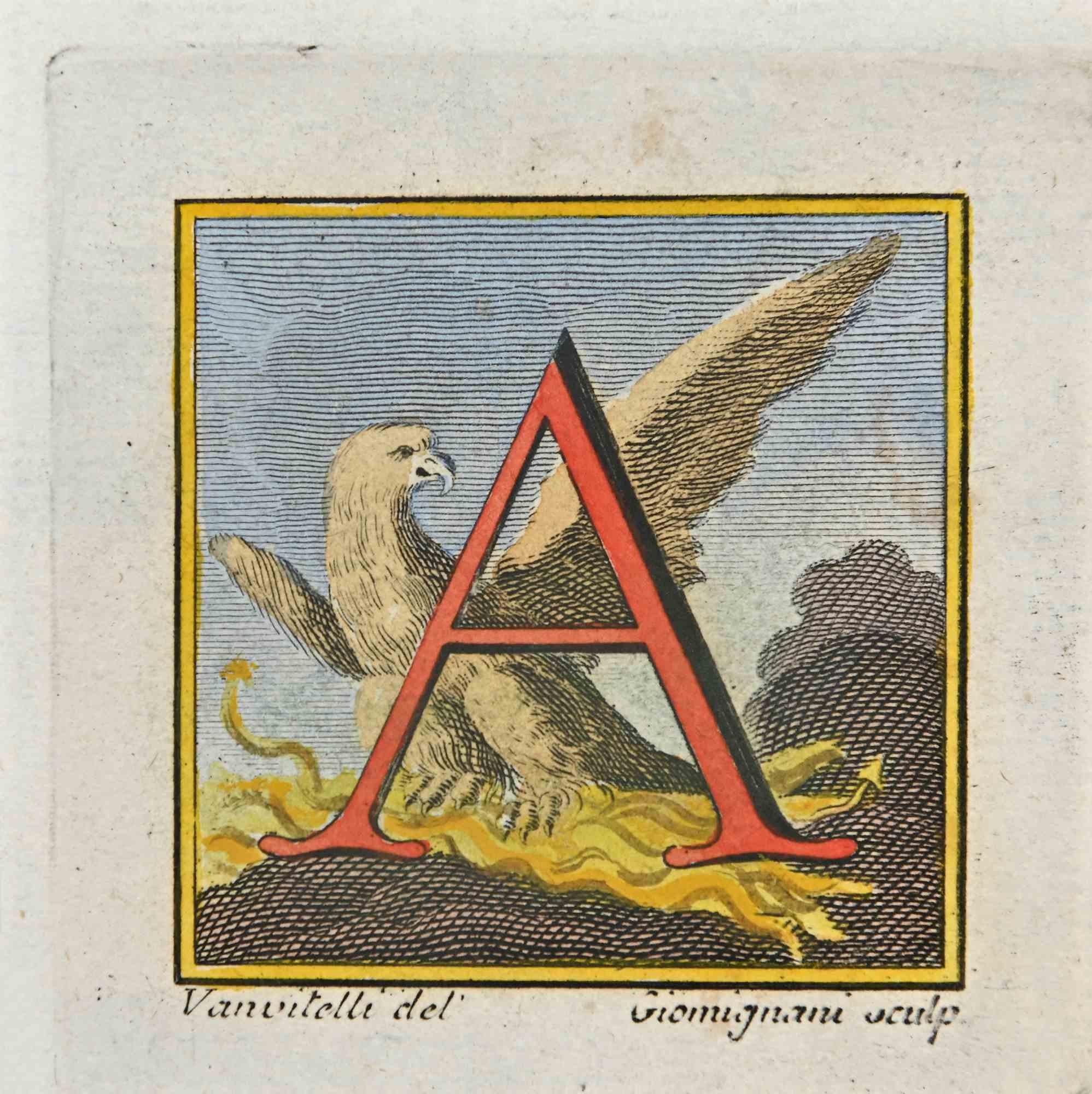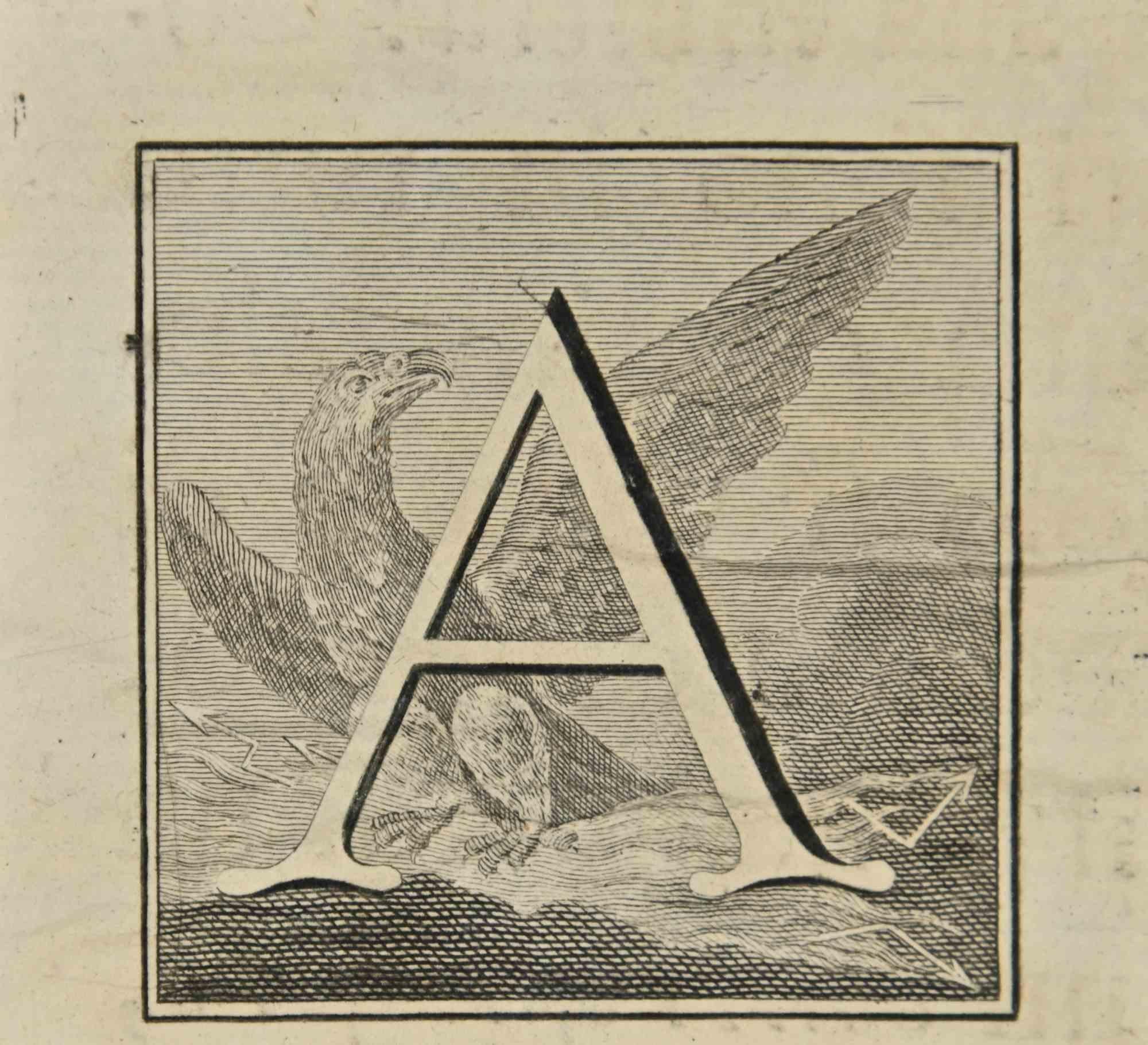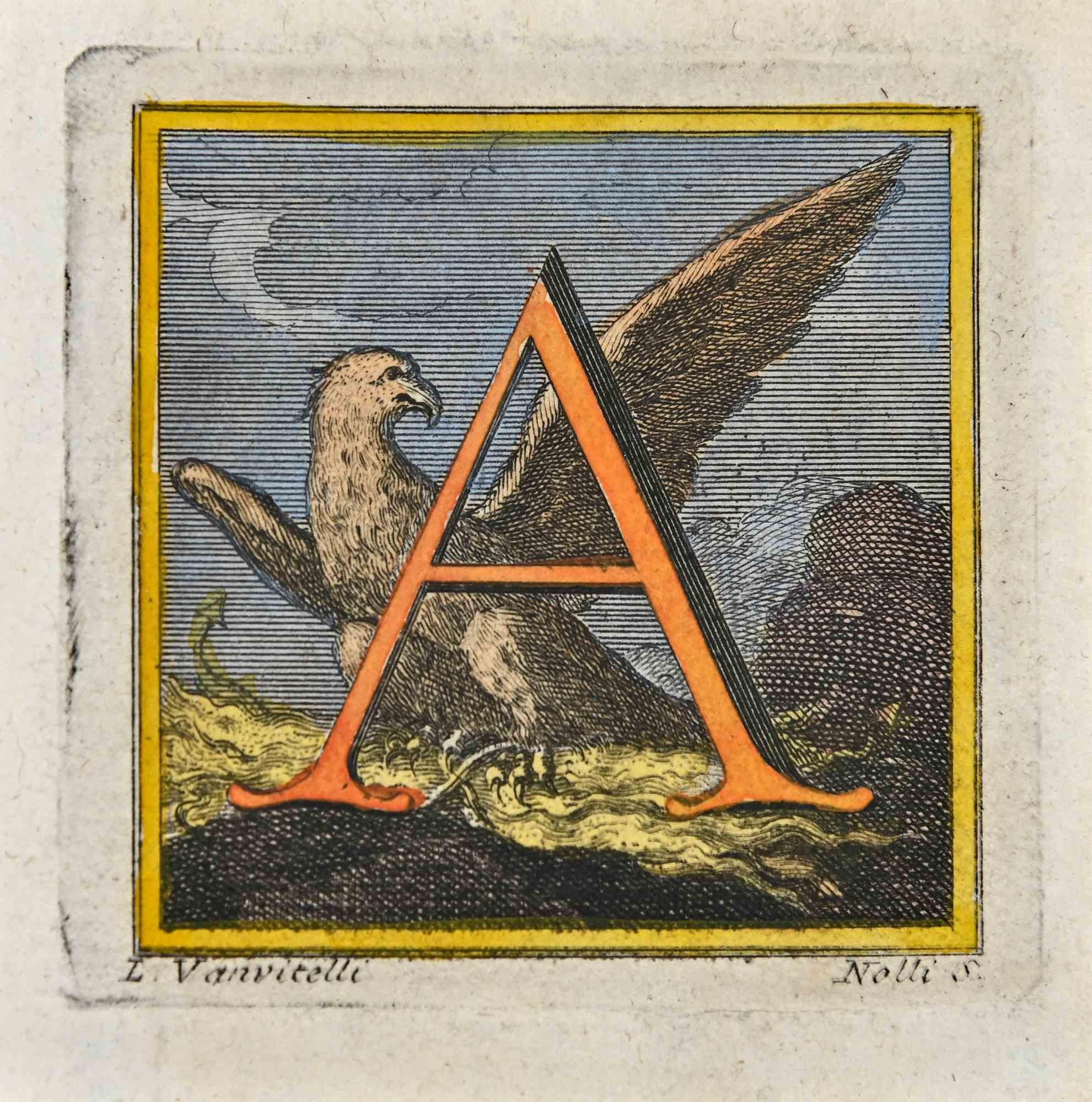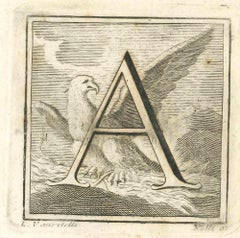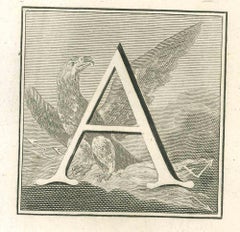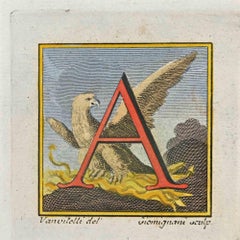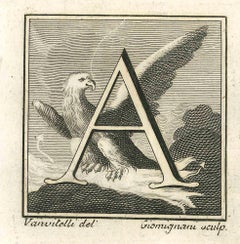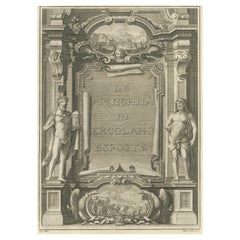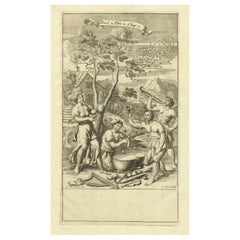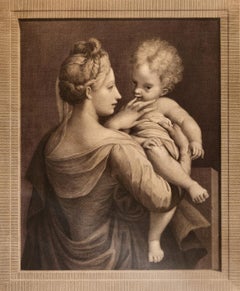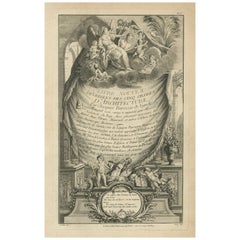Items Similar to Letter of the Alphabet A - Etching by Luigi Vanvitelli - 18th Century
Want more images or videos?
Request additional images or videos from the seller
1 of 2
Luigi VanvitelliLetter of the Alphabet A - Etching by Luigi Vanvitelli - 18th Century18th Century
18th Century
$235
£179.37
€200
CA$331.48
A$364.11
CHF 190.29
MX$4,342.34
NOK 2,409.55
SEK 2,244.70
DKK 1,524.38
About the Item
Letter of the Alphabet A, from the series "Antiquities of Herculaneum", is an etching on paper realized by Luigi Vanvitelli in the 18th century.
Good conditions.
The etching belongs to the print suite “Antiquities of Herculaneum Exposed” (original title: “Le Antichità di Ercolano Esposte”), an eight-volume volume of engravings of the finds from the excavation of the ruins of Herculaneum in the Kingdom of Naples (now Campania, Italy). It was published between 1757 and 1792 by the Regia Stamperia, and copies were delivered to selected recipients across Europe.
Despite the title, the Antiquity of Herculaneum shows objects from all the excavations undertaken by the Bourbons in the Gulf of Naples. These include Pompeii, Stabia and two sites of Herculaneum: Resina and Portici.
The Bourbon King Carlo appointed fifteen scholars creating a new “Herculaneum Academy” to study the artifacts and publish the results of the archaeological excavations of the sites.
- Creator:Luigi Vanvitelli
- Creation Year:18th Century
- Dimensions:Height: 2.76 in (7 cm)Width: 2.76 in (7 cm)Depth: 0.04 in (1 mm)
- Medium:
- Movement & Style:
- Period:
- Framing:Framing Options Available
- Condition:Insurance may be requested by customers as additional service, contact us for more information.
- Gallery Location:Roma, IT
- Reference Number:Seller: T-1377961stDibs: LU650311809622
About the Seller
4.9
Platinum Seller
Premium sellers with a 4.7+ rating and 24-hour response times
1stDibs seller since 2017
7,817 sales on 1stDibs
Typical response time: 1 hour
- ShippingRetrieving quote...Shipping from: Grasse, France
- Return Policy
More From This Seller
View AllLetter of the Alphabet A - Etching by Luigi Vanvitelli - 18th Century
Located in Roma, IT
Letter of the Alphabet A, from the series "Antiquities of Herculaneum", is an etching on paper realized by Luigi Vanvitelli in the 18th century.
Good conditions.
The etching belon...
Category
Late 18th Century Old Masters Figurative Prints
Materials
Etching
Letter of the Alphabet A - Etching by Luigi Vanvitelli - 18th Century
Located in Roma, IT
Letter of the Alphabet A, from the series "Antiquities of Herculaneum", is an etching on paper realized by Luigi Vanvitelli in the 18th century.
Good conditions.
The etching belon...
Category
Late 18th Century Old Masters Figurative Prints
Materials
Etching
Letter of the Alphabet A - Etching by Luigi Vanvitelli - 18th Century
Located in Roma, IT
Letter of the Alphabet A, from the series "Antiquities of Herculaneum", is an etching on paper realized by Luigi Vanvitelli in the 18th century.
Signed on the plate.
Good conditio...
Category
Late 18th Century Old Masters Figurative Prints
Materials
Etching
Letter A- Etching by Luigi Vanvitelli - 18th Century
Located in Roma, IT
Letter A is an Etching realized by Luigi Vanvitelli in 18th century.
The etching belongs to the print suite “Antiquities of Herculaneum Exposed” (ori...
Category
Late 18th Century Old Masters Figurative Prints
Materials
Etching
Letter of the Alphabet A - Etching by Luigi Vanvitelli - 18th Century
Located in Roma, IT
Letter of the Alphabet A, from the series "Antiquities of Herculaneum", is an etching on paper realized by Luigi Vanvitelli in the 18th century.
Good conditions.
The etching belon...
Category
Late 18th Century Old Masters Figurative Prints
Materials
Etching
Letter of the Alphabet A - Etching by Luigi Vanvitelli - 18th Century
Located in Roma, IT
Letter of the Alphabet A from the series "Antiquities of Herculaneum", is an etching on paper realized by Luigi Vanvitelli in the 18th century.
Signed on the plate.
Good conditions...
Category
Late 18th Century Old Masters Figurative Prints
Materials
Etching
You May Also Like
Original Italian Frontispiece with Classic Elegance Engravings, 1757
Located in Langweer, NL
This is the frontispiece of the first volume of "Delle antichità di Ercolano" (The Antiquities of Herculaneum), published in 1757 by the Royal Printing House of Naples, Italy.
The ...
Category
Antique 1750s Prints
Materials
Paper
$225 Sale Price
20% Off
Free Shipping
An Allegorical Illustration from Anthony Le Grand's The Principles of Philosophy
Located in Langweer, NL
This is a fascinating print by Johannes Kip (1652/53–1722), an accomplished Dutch engraver known for his works illustrating various subjects in philosophy, architecture, and landscap...
Category
Antique 1690s Prints
Materials
Paper
$300 Sale Price
20% Off
Parmigiani Amica: An 18th Century Engraving and Etching by Strange After Mazzola
Located in Alamo, CA
This is an 18th century engraving and etching entitled "Parmigiani Amica" by Robert Strange after a painting by Girolamo Francesco Maria Mazzola, better known as Parmigianino, who lived during the Renaissance period. It was published in London in 1774. As the inscription states, the painting was in the collection of the King of Naples at the time the engraving was made. The engraving depicts a half-length portrait of a young woman, known as Parmigiani's Amica (meaning "female friend" in Italian). She is depicted wearing a simple but elegant dress with a low-cut neckline, which reveals her delicate features and graceful neck. Her hair is arranged in a simple yet stylish manner. She is turning to the right to look lovingly at her infant, which she is holding with her right arm. She is touching the baby's mouth with her left hand. The background of the engraving is plain and unadorned, allowing the viewer to focus entirely on the subject of the portrait. The result is a beautiful and timeless image that captures the essence of Renaissance portraiture.
The engraving is printed on watermarked paper. The sheet measures 16.25" high and 12' wide. The sheet is adhered to paper in its upper corners and it has been removed from the paper in its lower corners. There is some mild discoloration and some wrinkling in the margins, including the lower inscription area, and a small dark spot in the upper margin, which may represent a drop of ink occuring at the time of printing. These issues do not involve the image, which is in very good condition. The print is held by several museums and institutions, including: The Metropolitan Museum of Art in New York, The British Museum in London, The Royal Museums of the UK, The British National Trust...
Category
Late 18th Century Portrait Prints
Materials
Engraving, Etching
$1,500 Sale Price
20% Off
Renaissance Architectural Orders by Vignola's Frontispiece, 1767
Located in Langweer, NL
This image is an intricate frontispiece from a book by Jacques Barozzi de Vignole, known as Vignola, an influential 16th-century Italian architect who was one of the great architect ...
Category
Antique 1850s Prints
Materials
Paper
David Loggan Cambridge View Frontispiece Cantabrigia engraving 1715
By David Loggan
Located in London, GB
To see our other views of Oxford and Cambridge, scroll down to "More from this Seller" and below it click on "See all from this Seller" - or send us a message if you cannot find the ...
Category
1710s Realist Prints and Multiples
Materials
Engraving
Study for a Frontispiece, a baroque drawing by Giovanni Antonio Pellegrini
By Giovanni Antonio Pellegrini
Located in PARIS, FR
This masterly frontispiece study, executed with a very sure hand, testifies to the survival of the great Baroque taste in 18th century Venice. It could be one of the very last works by Giovanni Antonio Pellegrini: the few lines that cross the papal arms evoke those of Benedict XIV, who became pope in 1740, one year before the artist's death.
1. Giovanni Antonio Pellegrini and the European influence of Venetian history painting in the 18th century
Giovanni Antonio Pellegrini was born in Venice in 1675 and trained in the studio of the Milanese painter Paolo Pagani (1655 - 1716). Pagani, who had been living in Venice since 1667, took him to Moravia and Vienna from 1690 to 1696. After a stay in Rome from 1699 to 1701, Pellegrini married Angiola Carriera in 1704, the sister of the great pastelist Rosalba Carriera.
From 1708 onwards, Pellegrini left Venice and began an extensive tour of Europe: he worked in England between 1708 and 1713, where he met great success, particularly at Kimbolton Castle and Castle Howard. He then worked in Germany and the Netherlands, then in Bohemia and Austria, before returning briefly to England in 1719. In 1720 he was in Paris where he decorated the ceilings of the Royal Bank for John Law...
Category
1740s Old Masters Figurative Drawings and Watercolors
Materials
Ink
More Ways To Browse
Vintage Aquarius Art
Woman In Boat
180 Dessins De Picasso
1940s Framed Japanese Silk Paintings
Al Hirschfeld Hollywood
Bob Dylan Poster
Bob Dylan Posters Vintage
Chagall Unsigned
Chapeau Pierre
Dali Changes In Great Masterpieces
Dali Horse
Dance Of Death
Dean Mitchell
Edgar Degas Lithograph
Framed Wpa Prints
Hablot Knight Browne
Henry Moore On Sale
Henry Moore Reclining Figure
